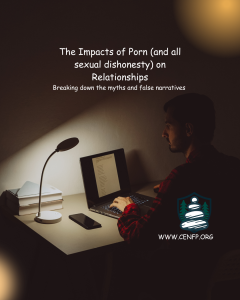
Power and Pain = Coercive Control
- #abuse, #cenfp, #coercivecontrol, #coercivecontrolequalpain, #controlthebeliefnarrative, #intimatepartnerabuse, #powerandcontrol, #powerandcontrolisaboutpain, #powerequalspain, #psychologicalabuse, #resistreasoningwithanabuse, #shootthemessenger, #socalledrecoverymodel, #targetedpartnerabuse©, #verbalabuse
- #abuse, #cenfp, #coercivecontrol, #coercivecontrolequalpain, #controlthebeliefnarrative, #intimatepartnerabuse, #powerandcontrol, #powerandcontrolisaboutpain, #powerequalspain, #psychologicalabuse, #resistreasoningwithanabuse, #shootthemessenger, #socalledrecoverymodel, #targetedpartnerabuse©, #verbalabuse
The Main Tactics of Men Targeting Abuse of Their Intimate Partner
In the early days of dissecting the elements of abuse and coercive control into the model most abuse specialists use today, we ran into a lot of pushback with the language, labels, and behaviors. As you are likely aware, most men refuse to accept the unilateralality of their behavior. Similar to their rejection of personal accountability, many abusers and coercive controlling men refuse to see that abuse is a men’s issue.
Likewise, those who came from the so-called “addiction” model, spending years in the rubbish of powerlessness talk and group work that supported and even, in many cases, sensationalized the betrayal stories shared by members of these so-called “recovery groups – to the point that many men learned tricks from one another in the sharing of their step-work – these groups also reject the premise of coercive control.
Even in the days of what Center for Peace refers to as the “Anti-Narc Movement” (CFP/cj, 2015), the struggle for those of us laboring to move coercive control on to a deeper academic foothold experience similar abusive attacks on our model, programs, and even at our character.
What is really going on with the social refusal to see the truth of what so many women are experiencing?
Shoot the Messenger
The tactic is obvious. When something is being said that a larger group of people do not like (primarily due to their culpability for the problem), shutting down the warning messages and cries for help with mocking, criticizing, and condemning is the primary objective of the guilty.
When you gain the advantage of the social narrative, you have control of the power of belief. With this power you can inflict great pain on those deeply impacted by the abuse and the absent social support to shut down these human crimes.
Power and Control
We have several blogs that discuss and define Coercive Control. Here’s a quick definition for anyone new to our blog.
Coercive Control is defined as a pattern of controlling behavior used by a perpetrator to establish and maintain control over the intimate partner. This behavior is predominantly men overpowering women.
A key factor to this phenomenon is the patternicity behaviors. The analysis of patterns embedded in the behaviors of coercive control provides important context necessary to remove the whitewashing narrative that the behavior is a one-time incident rather than a pattern of behaviors. Thus, the issue is not abuse, or coercive control, but a marital problem.
Power and Pain
The advantage of holding power in a relationship lies in the fact that exerting control over another person inevitably causes pain. Herein is the reason this behavior is viewed as abuse. Control is unilateral. Control robs the victim of her rights and dignity in the relationship. Control results in pain from the abusive tactics.
Peace, love and safety in a marriage are not achieved through male ideologies of patriarchy, power, or the infliction of pain as a means to control. Men using these methods are abusive These are often the same types of individuals who believe they are always right on issues; they believe they have a right to their self-appointed privileges, beyond what they believe you have a right to, and will abuse psychologically, verbally, financially and in all other areas for the win.
If you have experienced punishment for exercising your own autonomy or decision-making rights in your marriage, you may have experienced how power and control are connected to pain. Coupled with this pain is his narrative about the issue is accurate and matters most. He will be able to flip scripts and turn against you any reasonable discussion you attempt to have with him on the issue – creating more pain.

Resist Reasoning and Explaining
Years ago, there was discussion in the academic literature suggesting that calling out the abusive and coercive behaviors of the abuser was the best way to mitigate future abuse. In our years of experience at Center for Peace, we do not concur with this approach. Any contradictory dialogue with an abuser results in his projection that you are criticizing him, angry, controlling or abusing him.
Yellow Rocking interactions prove to have better outcomes, not just in how you navigate parenting with an abuser, but also the day-to-day household tasks and logistics. Remember, if you are attempting an interaction with an abuser who sees himself as right, there’s no point in correcting his self-achieved conception.
Support is Available
Support is Available
At Center for Peace, we offer several types of support, both group and individual. Working with properly trained abuse specialists is key to pulling yourself out of the mire of coercive control and the associated social narratives that enable abusers.


